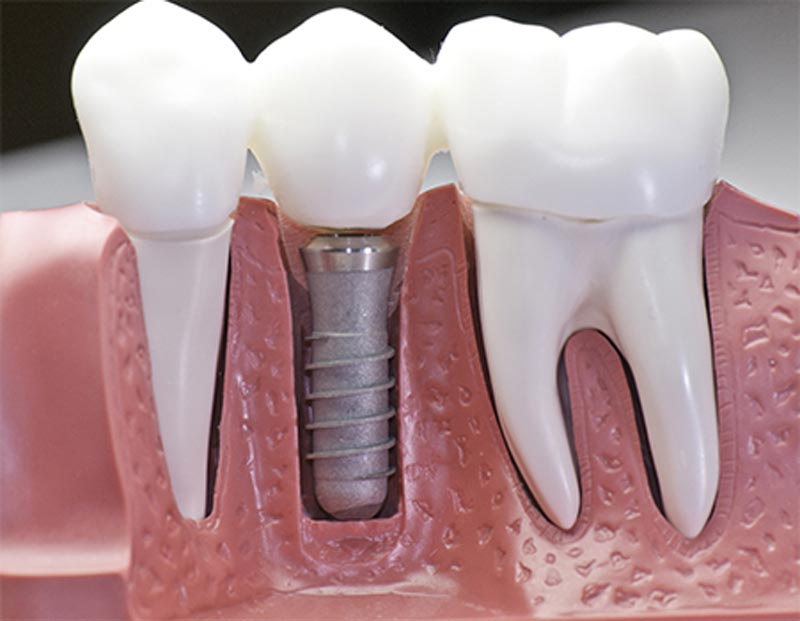What to do if you have a Loose Dental Implant

In some situations, you may find that your dental implant starts to feel loose. Take a look at some important steps you need to take if this happens.
Dental implant surgeries have a very high success rate when performed by highly skilled oral surgeons such as Dr Burhaan Kassim of Southside Dental Implants. However, there are multiple factors, post-surgery, that can impact how your body reacts to the implant. If there has been a problem with the healing process, the implant may become loose in the mouth. If your dental implant starts to loosen, you must have it removed.
Some people may suggest that you should wait for the implant to “tighten up”, but this would just put you in danger of further problems. Delaying treatment would only mean the chances would increase of bone damage and/or bone loss from around the implant. See a highly proficient dental implant specialist, like Dr Kassim, as soon as possible after feeling any movement from your implant.
One loose dental implant does not rule out future implant success
If the cause of the dental implant failure is identified and treated properly, there should not be a heightened risk that future implants will also fail. Overall, dental implants are a very reliable form of treatment for teeth replacement. Nevertheless, the success of the implant surgery does depend on the gum tissue and the condition of the underlying bone that integrates with the implant.
Why can a dental implant become loose?
Osseointegration (the process where the bone tissue binds directly to the implant fixture) can sometimes fail, which is the most common reason behind loose dental implants. The integration process involves the implant being anchored in the bone securely, but in occasional cases, a layer of soft tissue forms between the bone and the implant resulting in some movement of the implant.
Likely factors that can contribute to the osseointegration process failing include:
- Bone quality

- Infection
- Bone grafting
- Bacterial contamination
- Poor blood supply to the gums and bone surrounding the implant, and
- The degree of surgical trauma experienced
A loose dental implant requires replacement
Any movement from your dental implant requires specialist treatment from a qualified oral surgeon like Dr Burhaan Kassim, who is the principal dentist at Southside Dental Implants in Sunnybank, Brisbane. The required treatment process may be as follows:
- Removal of the loose implant, and thorough cleaning and debridement of the site and surrounding tissues.
- Insertion of a bone graft into the socket to allow the site to heal. This simple procedure is done to stop the bone from receding (which is the bone’s natural tendency after removing a tooth or implant). It is important to preserve the bone structure as much as possible so that there is enough bone tissue to support a replacement implant.
- The growth of the bone tissue is usually checked around four months after the initial implant removal and bone graft. You can be scheduled for a second implant procedure once the graft has produced enough tissue to securely support an implant.
If, after the initial months, the bone graft procedure has not produced enough satisfactory bone tissue for the implant to be securely placed, additional grafting may be required to ensure that the replacement implant will integrate successfully into the bone tissue and become permanently stable.
Contact Southside Dental Implants if you are concerned
If you are experiencing movement with your dental implant/s, contact the friendly and professional staff at Southside Dental Implants at Sunnybank, Brisbane straight away to make an appointment with Dr Burhaan Kassim.

